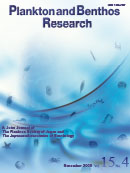15 巻, 4 号
選択された号の論文の7件中1~7を表示しています
- |<
- <
- 1
- >
- >|
Original Papers
-
2020 年15 巻4 号 p. 289-295
発行日: 2020/11/18
公開日: 2020/11/12
PDF形式でダウンロード (27769K) -
2020 年15 巻4 号 p. 296-305
発行日: 2020/11/18
公開日: 2020/11/12
PDF形式でダウンロード (29302K) -
2020 年15 巻4 号 p. 306-316
発行日: 2020/11/18
公開日: 2020/11/12
PDF形式でダウンロード (713K) -
2020 年15 巻4 号 p. 317-326
発行日: 2020/11/18
公開日: 2020/11/12
PDF形式でダウンロード (11191K) -
2020 年15 巻4 号 p. 327-333
発行日: 2020/11/18
公開日: 2020/11/12
PDF形式でダウンロード (28813K)
Notes
-
2020 年15 巻4 号 p. 334-336
発行日: 2020/11/18
公開日: 2020/11/12
PDF形式でダウンロード (9941K) -
2020 年15 巻4 号 p. 337-341
発行日: 2020/11/18
公開日: 2020/11/12
PDF形式でダウンロード (10771K)
- |<
- <
- 1
- >
- >|
